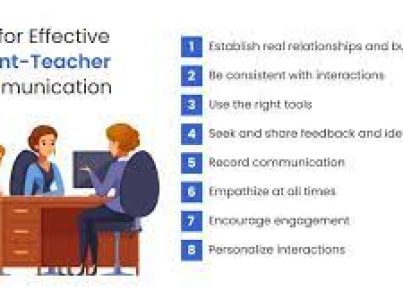Introduction
The traditional model of parent-teacher communication often relies on occasional parent-teacher conferences and sporadic updates about school events and student performance. In today’s rapidly evolving educational landscape, it is crucial to explore alternative ways of working with parents to forge stronger partnerships focused on the shared goal of student success.
Creating A Collaborative Environment
A shift towards a more collaborative approach begins with recognizing that parents are their child’s first educators. By including them in the decision-making process, educators can create an environment where both parties share responsibility for a student’s growth and development. This can include:
1. Establishing regular communication channels: Use tools like emails, newsletters, social media pages, or apps designed specifically for parent-teacher interaction. By keeping parents informed about school activities, assignments, and successes, they stay engaged and feel more connected to the learning journey.
2. Encouraging active participation: Create opportunities for parents to be directly involved in their children’s education. This could include volunteering in the classroom, attending workshops, or joining committees that tackle issues such as safety or curriculum development.
3. Seeking parent input: Demonstrate respect for parents’ opinions by soliciting their perspectives on school policies, upcoming events, or educational approaches.
4. Implementing joint goal-setting: Encourage parents and students to set academic goals at the beginning of each semester collaboratively. This will ensure everyone is on the same page regarding expectations and priorities.
Education at Home
Supporting learning outside school plays a vital role in a child’s academic success. Teachers can work closely with parents to create a supportive home environment by:
1. Providing resources and guidance: Offer information on age-appropriate learning strategies and materials that parents can use at home to reinforce classroom lessons.
2. Encouraging healthy habits: Share tips on how proper nutrition, exercise, and sleep habits can positively impact a child’s academic performance.
3. Supporting emotional well-being: Foster open communication to encourage parents to be aware of their child’s emotional state and share any concerns with their teachers.
Building Trust and Mutual Respect
For a successful collaboration, both parents and educators must build trust and mutual respect. This can be achieved by:
1. Actively listening: Give parents the space to express their concerns, frustrations, or suggestions without judgment.
2. Being empathetic: Putting oneself in the parent’s shoes can help to better understand their perspectives and challenges.
3. Maintaining confidentiality: Trust in the relationship is built on the assurance that sensitive information will be handled with discretion.
4. Celebrating successes together: Sharing students’ achievements with both parents and educators fosters a sense of collective pride and strengthens the bond between partners.
Conclusion
A new approach to working with parents needs to be embraced – one that moves away from sporadic communication towards building a strong partnership based on collaboration, mutual respect, and support. The benefits of such an approach include greater parental involvement, improved student outcomes, and ultimately a more cohesive and supportive educational community for all stakeholders.





